Preparing for canning season each year is a lesson in organization we learned long ago. Garden harvests wait for no one & take no prisoners! Being prepared & having everything you need for this busy yet joyful season will leave you feeling a step-a-head of the food-preservaton mahem.
This post may contain affiliate links at no additional cost to you. By making your purchases through the links on this website, IMSL may make a small percentage at no direct cost to you. IMSL only promotes products we use & truly believe in. Please refer to my Privacy & Disclosures for further information. IMSL thanks you for your support!
Here on the hill our goal each year is to put up enough of the food we grow & harvest each season for the coming winter months, as well as enjoy the fresh bounty all summer long. It took many years to determine what works for us and to grow what we eat.
One of the most important & best things we instituted right from the beginning? Keeping a gardening, harvesting, & canning journal. Trust us! You think you will remember what you grew, what you canned, & how much of each item? You won’t 🙂
Keeping a journal, no matter how big or small your canning attempts are, will be something you enjoy looking back on year to year, & keep you on point of what to can, how many jars to can, & what you wouldn’t can again!
We don’t can all our harvest, only the things we really enjoy eating. Pickles, spiced beets, dilly beans, and tomato products of all kinds (think sauce, salsa, & whole) are our mainstays. We also are fortunate to utilize a cold cellar (if you’re not sure what a cold cellar is used for, keep your eye out for an upcoming post on just that) to store fresh carrots, beets, turnip, potatoes & more. We also freeze & dehydrate to preserve our harvest. But those are topics for another day.
You get the idea, it’s a LOT of work to put food up! Anyone who grows their own, knows that come harvest time, it’s crazy time! The harvest waits for no one & when it comes, it comes on strong!
Here at IMSL, you know it’s officially canning season when the refrigerator is packed to the brim with fresh string beans waiting to be blanched & frozen, bushels (yes, you heard right, bushels) of tomatoes ready to be processed & turned into our favorite items like our amazing salsa & sauce, and our crisper filled with cucumbers waiting to be turned into pickles.
“Canned tomatoes are like summer saved, all that sun kissed flavor ready to be enjoyed.”
Better homes & gardens
Although this may seem overwhelming, being prepared in advance with all your canning needs ready to go will ease your mind knowing you are ready to take it all on! By taking a few simple steps to prepare for canning season, no matter if you plan on canning hundreds of jars or a few to enjoy & give as gifts, you will be ready to go.
We’ve compiled a few suggestions, tips, & recommendations for you to help ease the path to a smooth canning season.
WHY CAN?
There may be nothing better than tasting a burst of summer flavor than by opening a jar of homegrown, canned produce. There also may be nothing as beautiful as shelves lined with preserves, pickles, and sauces. Any home canner will tell you that although canning is labor intensive, it may very well be the most rewarding.
During the height of the growing season, our gardens offer an abundance of fresh produce. Whether growing your own or purchasing from your local farmers market or grocery, the opportunity is ripe for preserving these fresh foods.
Canning extends the shelf life of freshly harvested foods, typically by 1-2 years! As canned foods will retain nutrient content & flavor of many summer-time favorites, they are made easily accessible all year long through the canning process.
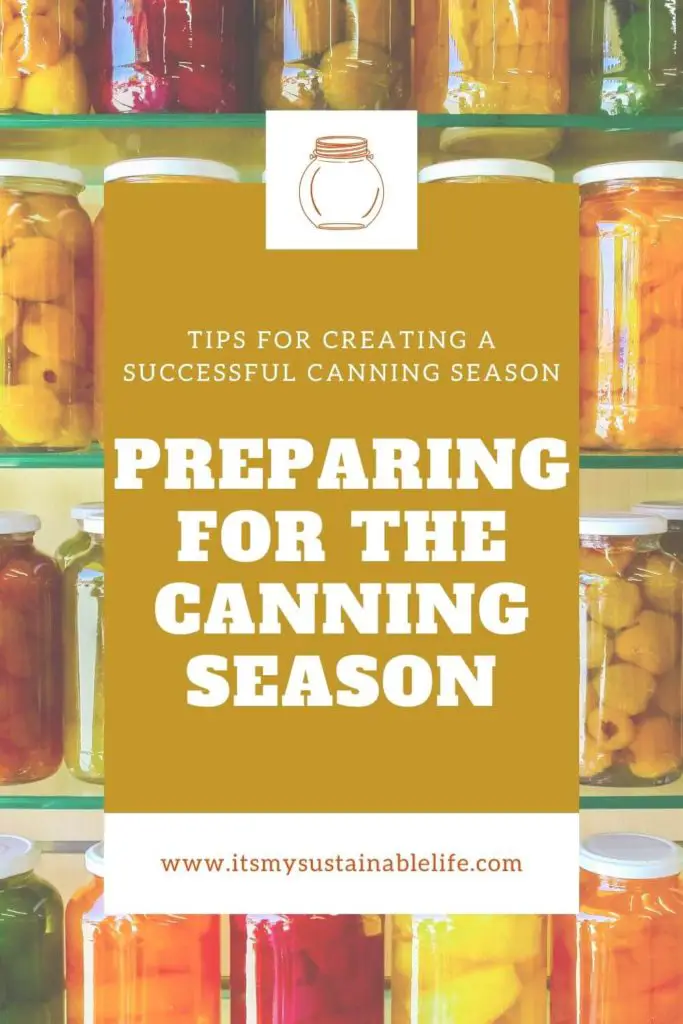
Many can for the pure joy of seeing their shelves lined with beautiful reminders of summers bounty, some for the control of what goes into their food, & others to simply preserve the hard work of growing their own food. No matter what your reasons, determing why you can will help determine what you need in order to prepare for canning season.
For instance, if you are looking to eat primarily from stores in your pantry throughout the year, you will obviously need more canning supplies than those looking to put up a few jars of their favorite recipes. Determine your goals & you will determine what you need of the following suggestions to have on hand.
“I think of my canning as fast food paid for in time up front.”
Barbara Kingsolver
SETTING REALISTIC GOALS FOR THE CANNING SEASON
Setting realistic goals for the canning season will take a bit of the pressure off once in the midst of the chaos. Know that you want at least 80-100 jars of whole tomatoes put up? Hold a family canning session & ask for help! Want to can jams & preserves to give as gifts? Have the decorative ball canning jars on hand for just that purpose.
Setting goals of what you wish to accomplish out of the canning season allows you to have on hand all that you will need to meet those goals.
TAKE A PANTRY INVENTORY
Prior to canning 80 jars of whole tomatoes, by taking an inventory of what remains on your pantry shelves of that same product save lots of effort & time if you only need to put up 40 jars this season since you have 40 left on your pantry from last season!
Speaking of last seasons leftovers, this would be a good time to also go through and sadly discard any jars you may have left over from previous years that are outdated. Again, knowing & determining the yearly needs of your family is something that may take several seasons to figure out, journaling yearly will help.
Looking for approximate storage dates for your canned goods? Refer to the National Center For Home Food Preservation website for approximate times & proper canning guidelines.
Don’t have a journal & don’t want to invest in one? Download our Canning Management Planner available in our Etsy Shop that can printed out for a canning binder. Simply click the button below for your copy.
Print the canning management binder sheets out & fill in year to year will keep your canning records organized & accessible not only for your canning records but also for your canning recipes, supplies, equipment and so much more.
Need assistance with remember the canning steps in all 3 processes?
To help you along with your processing efforts, I’ve created a unique FREE Canning Checklist cheatsheet listing all three methods of processing; pressure canning (article coming soon as well!), steam canning (instructional tutorial coming soon!), and water bath canning.
Print and laminate your copy of the Canning Checklist cheatsheet to use over and over again when processing! Simply use a washable marker to check off the list as you go! Once complete, wash the laminated list and you are ready for the next time you process!
Be sure to grab your FREE copy by clicking the button below 😊
GATHER CANNING RECIPES
Take a moment or two, sit down, enjoy a cup of sweet tea, & peruse your recipes. Determine which you will be making once again, pull them out (this is where our canning management binder will ease the burden of gathering each year!), & determine the estimated number of jars you would like to can.
Be sure to visit our favorites when making your lists by visiting our preserve & prepare section! Some of our other favorite sources of reliable canning recipes can be found below & will make great additions to your collection.
- National Center For Home Food Preservation
- Ball Blue Book Guide To Preserving 37th Edition
- Ball Blue Book Of Canning & Preserving 2020 (with over 350 recipes this one is on our list for sure)
- The New Homemade Kitchen
- The Homestead Canning Cookbook
In addition to these wonderful books, reach out to canners you may know & ask! Some of the most wonderful recipes are shared ones that have been tested & loved.
Check your local extension offices. They are typically filled with recipes to share. Here in NH our local extension office offers a plethora of information on home food preservation. Check your local state listings.
REFRESH CANNING SKILLS
Regardless of your canning experience, it’s always a nice thing to refresh your memory on appropriate & safe canning procedures. After all, this is something we only do for a short time each year. A good refresher can make the world of difference.
A great refresher can be sourced by scrolling to your right! Subscribe to IMSL’s monthly newsletter & you will receive our FREE eBook, Canning, A Beginner’s Guide, a complete canning primer eBook with everything you need to begin your canning journey or to refresh your memory!
“It’s the small trivial things in life that makes a human happy – like opening a pickle jar.”
really good
INVENTORY CANNING SUPPLIES
Now is the time to take note of all the canning supplies you will need for the season. Take inventory of jars (any need replacing (cracked/chipped) or need to purchase more?), & lids & bands (have enough for your canning estimates?), if not get ordering. We predict some of these items may be hard to source with the present circumstances & many looking to create their own food security. We recommend ordering or purchasing sooner than later 🙂
Be sure when going through your band stash to remove any that are beyond re-use. Discard or use for DIY projects (check out 13 Brilliant Ways To Repurpose Mason Jar Lids for some inspiration) & then determine if you will need to replace any.
Lehmans Hardware has a good deals on purchasing bands in bulk that you may wish to check out, & is a reliable source that IMSL turns to often.
In addition to the above items, you may want to review the recipes you will be using to see if any additional, nonperishable ingredients are needed that can be purchased ahead of time. Looking to pickle? Do you have enough canning salt & pickling spices on hand? What about vinegar?
Are you looking to put up jams, jellies, & preserves? Pre-purchase extra sugar & pectin that may be needed to accomplish this.
When taking inventory, be sure to double check any ingredients that you may have on hand at present are still viable. Is the expiration date far passed? Are your spices still aromatic? If not, it may be time to replace regardless of the amount on hand.
A good starting list can be found below. Again, compare this list to any recipes you plan on using for any odd non-perishable ingredients that can be purchased ahead of time.
- Regular Vinegar (5% acidity)
- Organic Apple Cider Vinegar (5% acidity)
- Organic Sugar
- Pectin (non-gmo, vegan, & kosher)
- Pomonas Pectin
- Canning Salt
- Organic Pickling Spice
- Bottled Lemon Juice
- Citric Acid
- Lids
- Bands
- Jars
There is nothing worse than being in the middle of canning chaos & not having the ingredients needed to complete the job. Take inventory, make a list & check it twice, just sayin 🙂
CHECK & ORGANIZE CANNING EQUIPMENT
As with any project, certain equipment is needed to get the job done & done efficiently and safely. Canning is no different. Beginner canners will need to source at a minumum the following equipment, experienced canners will need to check & organize the equipment they presently have.
Choosing the right equipment for any job can make or break the process. Canning is a lot of work, & having the appropriate equipment will make the process a smooth one.
General tools for the job include a large stockpot or waterbath canner, a pressure cooker if utilizing one, a small sauce pan, mason jars with lids & bands, & utensils including at least a jar lifter, funnel, magnet lifter, and ladle or spoons.
TWO METHODS OF CANNING SAFELY
What you will be canning will determine which canning process you will be utilizing. Waterbath canning method or pressure canning method (low acid foods).
Low-acid product such as meats, beans, & most vegetables will need to be processed (canned) in a pressure cooker.
Items such as jams, jellies, salsa, & most tomato items can be canned using the waterbath method of canning.
Always follow directions provided with recipe for processing methods & time recommendations.
WATERBATH CANNER
A water bath canner is essentially a very large stockpot. Large enought to hold at a minimum 7 quart jars (our preferred is 12 qt capacity) with at least 1-2 inches of water covering them.
If granite ware is not your thing and don’t want to have to periodically replace these waterbath canners, you can opt to spend a bit more and invest in a stainless steel large stockpot for canning. Lehmans Hardware has some amazing options that are highly recommended.
In addition to the waterbath canner, you will need a rack to place at the bottom of the pot (no jars should be resting on bottom) for a bit of “insulation” for the jars.
Purchased ones specifically made for canning are always an option, cooling racks work well as well.
Waterbath canners should be looked over for any cracks, chips, or any other issues with may interfere with safety & performance. Make sure any racks you will be reusing are stable, intact, & will handle the weight of the canning process.
PRESSURE CANNING
Should your pressure canner utilize a gasket system, check the gasket thoroughly for tears, cracks, drying. If any are present, be sure to replace immediately.
Prior to the beginning of canning season, have your pressure gauge tested if you are utilizing a dial pressure gauge, like the Presto pressure canners.
Most local extension offices offer this service at certain times of the year. Contact yours to make an appointment. Some stores who sell pressure canners may also offer this service. Otherwise, you will need to contact the manufacturer and have this service performed via shipping the dial to them.
Should you already own a Presto pressure canner & need to have your gauge tested, Presto can be reached HERE.
OR, you can invest in an All American pressure cooker that uses both systems and not have to worry about having your gauge tested 🙂 As the weight is what regulates & maintains the proper pressure, the gauge is just for backup & to indicate when the pressure is back to zero indicating it’s safe to open the canner.
We absolutely love our All American and highly recommend the investment. As you can see from the short video, its extremely heavy duty& well made in the USA. We presently have the 41.5 qt option as shown below, but there are smaller versions available as well.
INVENTORY & ASSESS CANNING TOOLS
There are a few additional canning tools that make the job of canning that much easier. If you are new to canning & need to purchase them the most cost-effective way is to purchase a canning kit as shown below. Simply click on the image to view this purchasing option from Lehmans Hardware.
For more experienced canners with existing equipment, take inventory of your tools. One that seems to wear out & need replacing every year or two is the jar lifter. If there are cracks, splits, or breakage in any of your tools, replace them.
CHECK LOCAL PRODUCE HARVESTING DATES
The food we preserve is only as quality as the food we source. Often times, many need to source their food from places other than their own gardens. Don’t grow it? Source it!
Sourcing what you can’t or don’t produce yourself from your local farmer, farmers markets, orchids, & berry farms are always a viable option. Knowing when they are expected to come into season is always good knowledge to have when planning your canning season & ensuring you don’t miss out!
Simply googling your state and expected harvest dates or ripening dates (ex., FL expected harvest dates) will hopefully pull up several options for you to determine the estimated dates of ripening where you can then plan accordingly.
“I eat local because I can.”
really good
Canning is just one option for preserving the harvest, freezing, storing, and dehydrating are all wonderful option as well. We utilize a combination of all those options to enjoy wonderful food all year.
Hopefully these tips on how to prepare for the canning season will have your canning chaos reduced to a minimum. May your canning be successful & your shelves soon filled.
Be sure to follow us on all social media to keep up with all the “happenings on the hill” and see what’s growing!
Love, Light, & Laughter ~


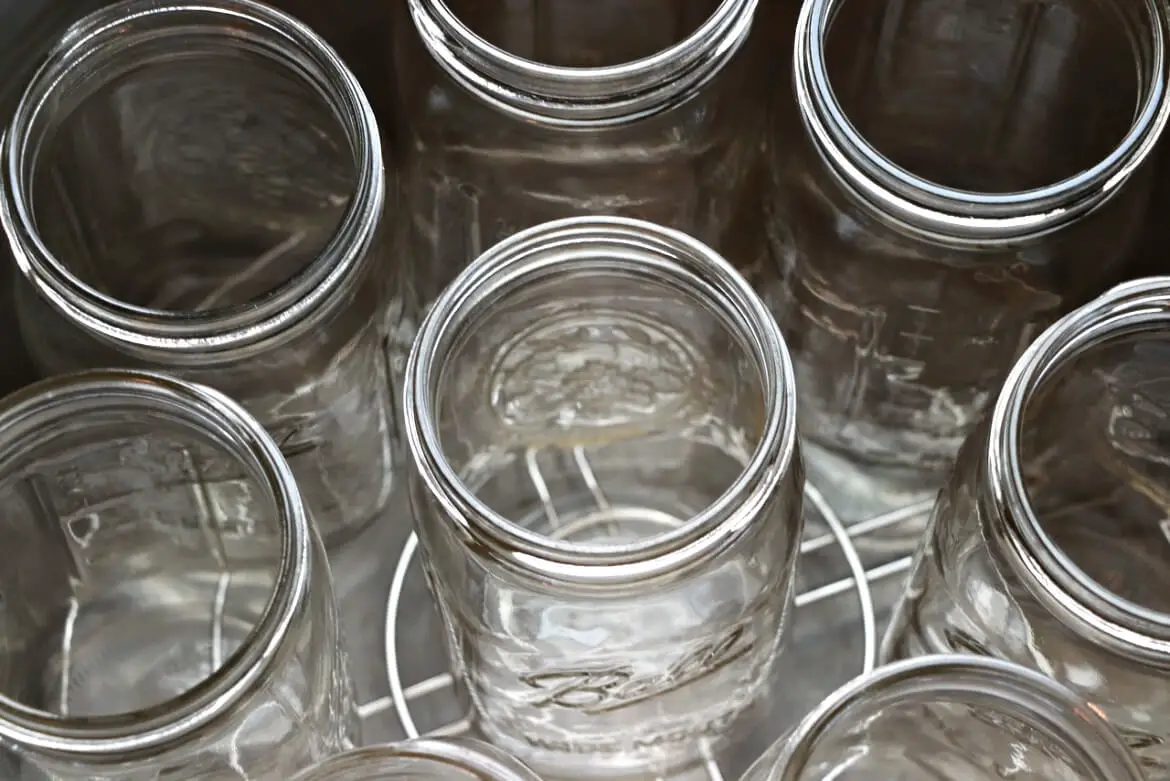
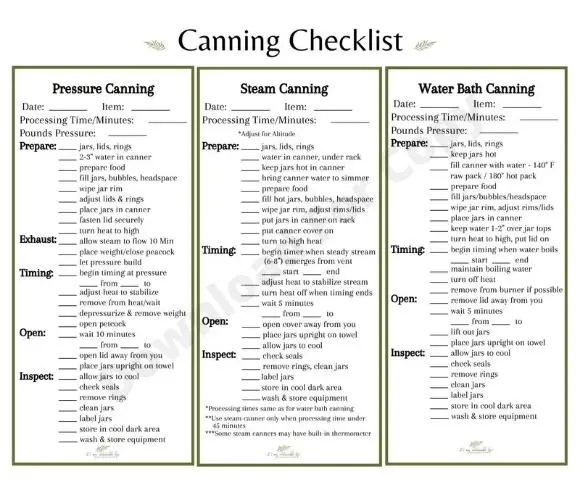
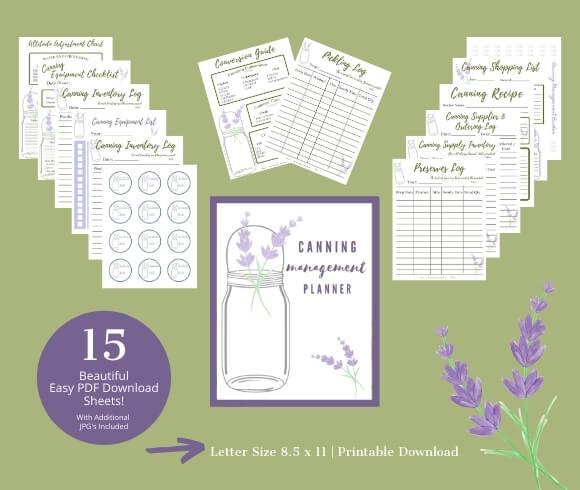
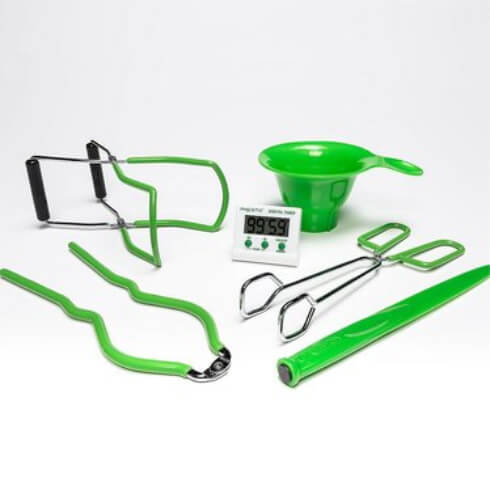
32 comments
CONGRATS! Your post is FEATURED at my #UnlimitedMonthlyLinkParty 14, open July 1 to 26. All entries shared if social media buttons are installed.
I’ve never canned but my grandmother and mother did! Loved seeing those rows of jars full of goodness from the garden!
The journal is a smart idea! It is so true that people think they will remember things so they don’t write it down and more often than not they forget. Being so well organized takes away a big headache later!
I have such a strong desire to can my own food. My mother in law does it every year and I have been waiting to learn from her. I am definitely saving this for future reference. Great article!
That’s wonderful! Be sure to grab our FREE copy of Canning For Beginners by subscribing. Have fun & happy canning!
I don’t have a garden at the present time, but I used to! I canned, pickles, beets, and tomatoes. Seeing all this makes me miss going to the cellar and finding all the jars of good food!
These are great ideas for those who can. I’ve never done it but enjoyed canned gifrs from those who do.
I’m looking forward to canning lots of pickled beets, dill pickles, and tomatoes this year.
Canning takes lots of work and time. This is all great information. I have canned a few times – I admire anyone who can accomplish the process.
Always such great information on your blog! Though I am not canning, I have been using quite a few of your gardening tips this season. I have learned a lot, so thank you!
So glad you’ve found the tips of use, Heather! Thank you for reading!
I used to can using the water bath method, but haven’t in a few years. This has inspired me to try again! Thanks!
My in-laws always give us green beans and tomatoes that they’ve canned. We’ve helped them with the canning process in the past, but as our family has grown we haven’t made the trip to their house as often. We certainly enjoy eating the garden fresh produce though.
Being prepared does make the canning process go much smoother.
I’ll be canning for the first time this harvest season at 50ish lol. I’m sure it will be a learning process. Thanks for the detailed info.
Never too “old” to start! Be sure to grab our ebook with easy to follow reminders for the canning process! Let me know if you have any questions!!
This looks really cool, I never canned before.
That’s a lot of tomatoes! The journal sounds like a great idea.
I’ve never tried canning, but it would be nice to have homegrown foods later. I really only grow tomatoes, and my problem is, my family eats them all! I would like to try it sometime, though. Especially homemade salsa!
Exactly why I have to grow so many, lol! Check out our recipe for salsa, https://www.itsmysustainablelife.com/how-to-make-a-sensational-salsa-for-canning/, its one that everyone we know begs for!
I love canning! This is a lot of great information!
Canning is something I always wondered about. You make it seem very doable! Thanks for these tips.
Again, I envy that you do this and that you are able to enjoy foods year round this way.
Oh I wish I had the space, time, and skills to do this! I have tried in the past and so jealous of those who can do this in mass quantities!
Hopefully you will be able to just on a smaller scale. Thanks for reading!
When our four children were young my hubby had a huge garden. I canned a lot. Now that we are seniors, the garden is just big enough for us to eat from. However, I gave all of my canning supplies to our two sons. They are now the canners in the family. Good information for sharing.
What a wonderful gift you gave to your sons! Not only the equipment but the knowledge as well.
Oh Thank you! I’m definitely pinning this for when I take the leap and start canning!
One of the most beautiful sites to see is a closet stocked with jars full of delicious, nutritious foods we’ve canned ourselves, to feed the family and friends in the months to come.
Love this thorough list of helps and tips!
“Fast food paid for in time up front!”
That’s a line I”m going to remember! I do keep a notebook of canning and gardening facts and figures to help me plan–and, as you said, to go back over and enjoy. It’s got 30 happy years worth of fun memories in it.
How fun it must be to look back on 30 years worth! Working on our 16th this year & hope to one day enjoy 30! Thanks so much for reading, Michele!
I have never really canned before. I freeze a lot of things but not canned. Would love to give it a try. This was very helpful.